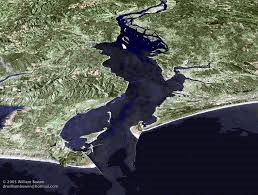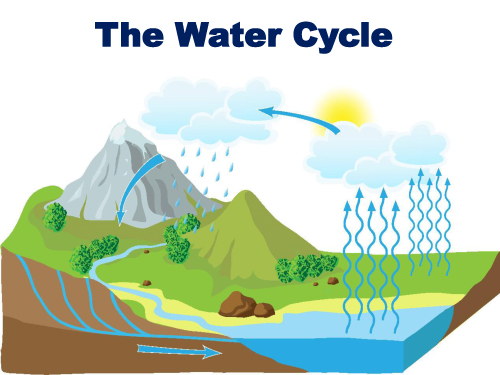Overview
Fresh water on Earth can be found in rivers, streams, lakes, and underground reservoirs. It is a small but important percentage of all water, since over 97 percent is seawater. The water cycle is the process of water circulation from the surface to the atmosphere and back again.
Characteristics of Streams
Streams are created when water flows through channels. A water channel consists of the floor, called a stream bed, and the sloping edges on either side, called banks. Water may flow with rapid currents along a steep gradient, or more slowly with friction from boulders in the stream bed. Streams also flow more rapidly when there is more water discharged. For example, when a stream is flooding in the spring, more water volume results in more rapid currents. However, when there is less water volume during the summer, the currents are slower. Some streams are intermittent, and only occur for part of the year, while others are perennial, and occur throughout the entire year. Perennial streams flow during the entire year, because they are fed by groundwater, even when there is little or no rain. In contrast, intermittent streams may appear suddenly after rain, and then dry up, leaving dry stream beds, when there is little rainfall during the summer.
Streams and Rivers
Rivers are larger than streams in general, and result when tributary streams flow into them. Their source may be in distant headwaters, such as the source of the Colorado River in the Rocky Mountains. The mouth of a river is the point where the river discharges into the ocean, or into a lake. For example, the mouth of the Columbia River is where it flows into the Pacific Ocean in an estuary near Astoria, Oregon.
The Water Cycle: Evaporation
Both fresh water and salt water evaporate into water vapor as it is heated by the sun. Most of the water that evaporates is from the surface area of the oceans, although some water can evaporate from soil. Water vapor can sublimate from ice and snow. Water vapor in the air is less dense than molecules of nitrogen or oxygen, and tends to rise in the atmosphere. However, as water vapor rises, it becomes colder, and some condenses to form water droplets.
The Water Cycle: Precipitation and Runoff
Water droplets condense into clouds and form precipitation that falls in the forms of rain, snow, and hail. Some water is stored in glaciers and ice caps in the form of ice, while other rainwater can flow over the ground in rivers, surface runoff, or be collected as groundwater. Another cycle begins as water evaporates into water vapor.
Interested in science tutoring services? Learn more about how we are assisting thousands of students each academic year.
SchoolTutoring Academy is the premier educational services company for K-12 and college students. We offer tutoring programs for students in K-12, AP classes, and college. To learn more about how we help parents and students in Richmond, VA: visit Tutoring in Richmond, VA




